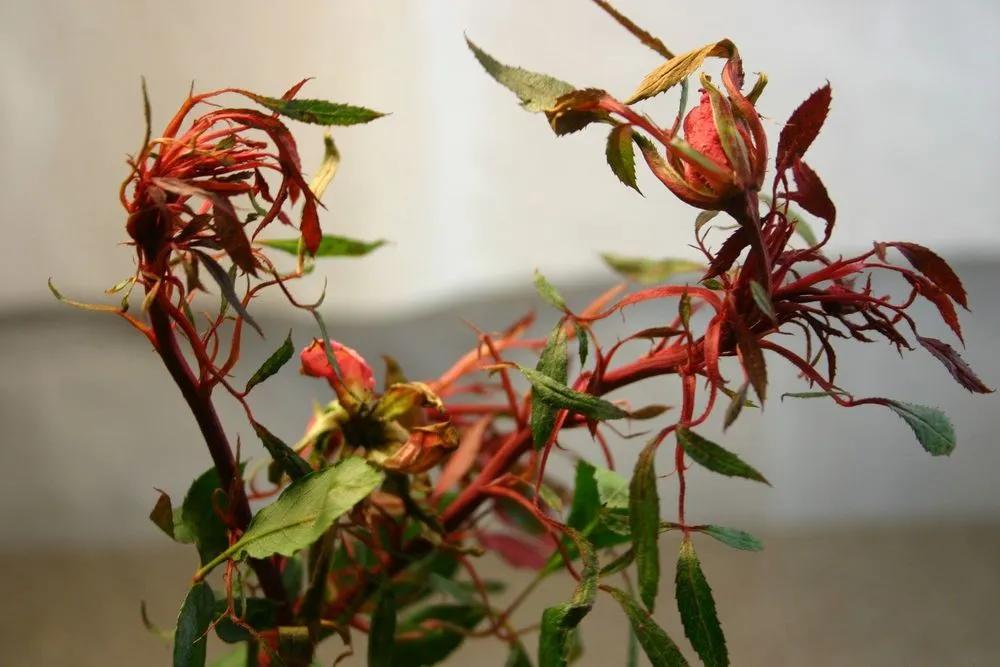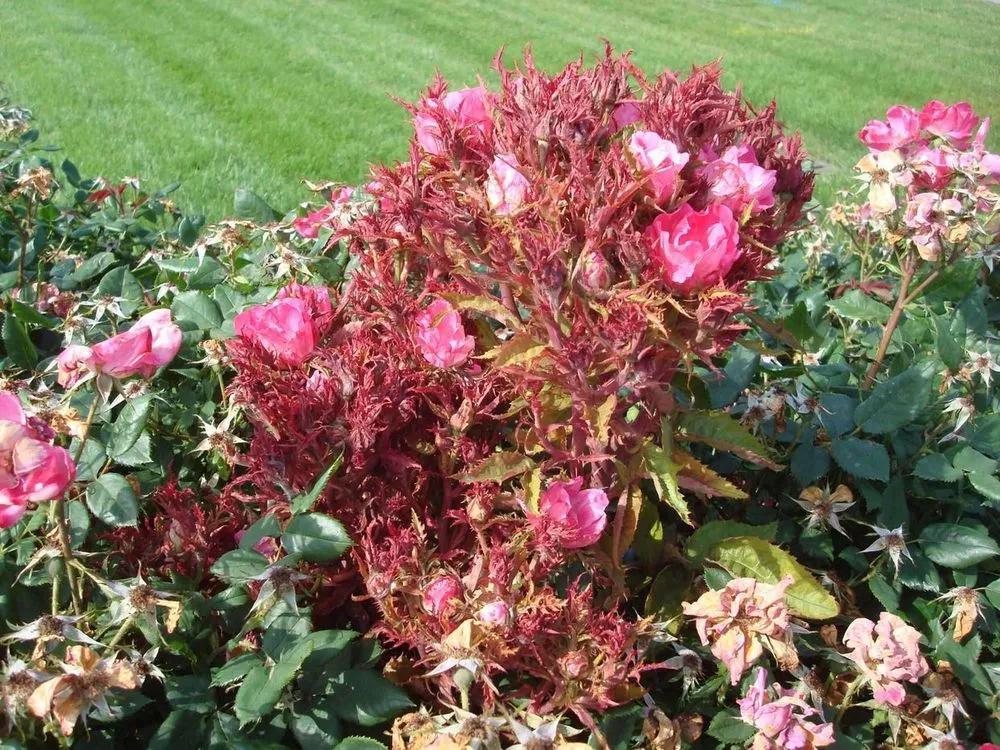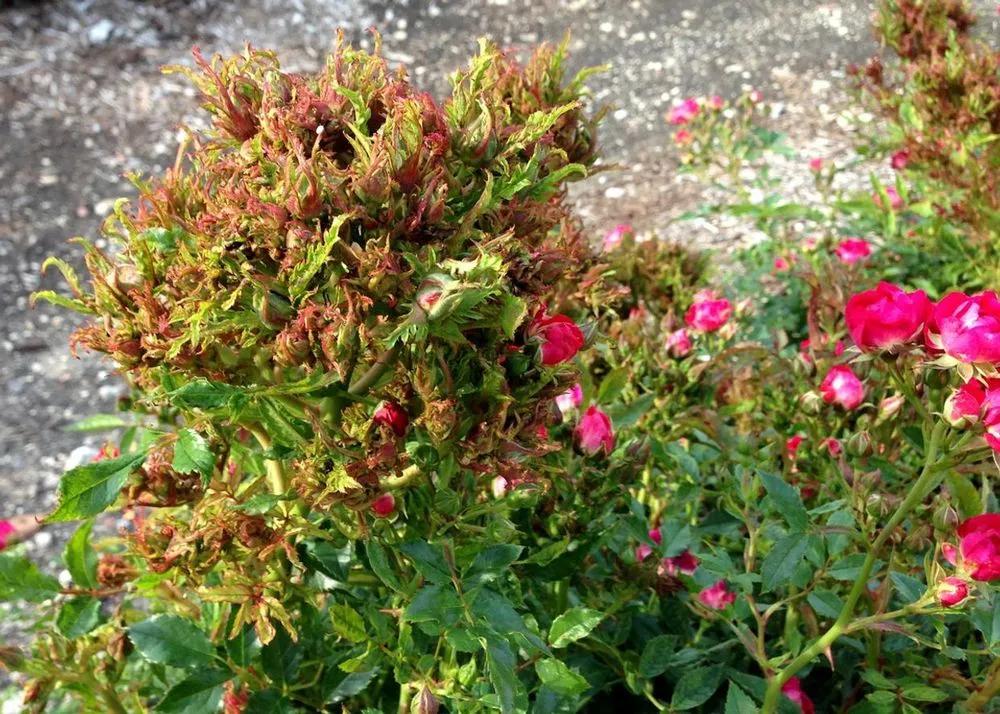This disease is caused by a virus transferred by a mite called eriophyid. The process of spreading the virus is simple: first, mites feed on the infected plant, and later they are transferred to the other one by wind or animals and humans in some cases. The mites need such "a ride" because they don't have wings.
Rose rosette disease



Signs of damage
- Rosettes. Flower buds appear in tiny clusters that are called rosettes.
- Deformation. When the flower opens, it already looks deformed.
- Weakening of the foliage. Leaves become deformed as well.
- Reddening of the leaves. One of the main symptoms is that the foliage changes color all of a sudden.
- Thorniness. The plant's thorns become thicker and more prominent.
How to prevent
Good care after the plant is crucial; it will help minimize many risks, including this one. Good air circulation and a lot of space are vital factors, especially if you want to avoid this disease because Rosette disease thrives in tightness since mites are moving from one plant to another to spread the virus. Therefore, it's way harder for the mites when the plants aren't planted so close. Another important thing is to protect your roses from the wind because, as mentioned above, wind helps transfer the mites. So you can protect your roses with walls or other plants but don't plant them too close. It is worth mentioning that invasive multiflora roses are considered a host for these mites, so it's important to control their quantity in your area to avoid RDD.
Heal
- There's no optimal cure for this disease, so it's better to focus on the prevention of it because once the rose is affected, you have to dig out the flower and destroy it since the virus can be transmitted to the other roses in your garden. After this, it is vitally important to sanitize all your instruments and wash your clothes to prevent further spreading of the mites that transfer this disease.
Go Premium to continue reading
Also you’ll get unlimited access to disease identification and all the other beneficial features
More problems
